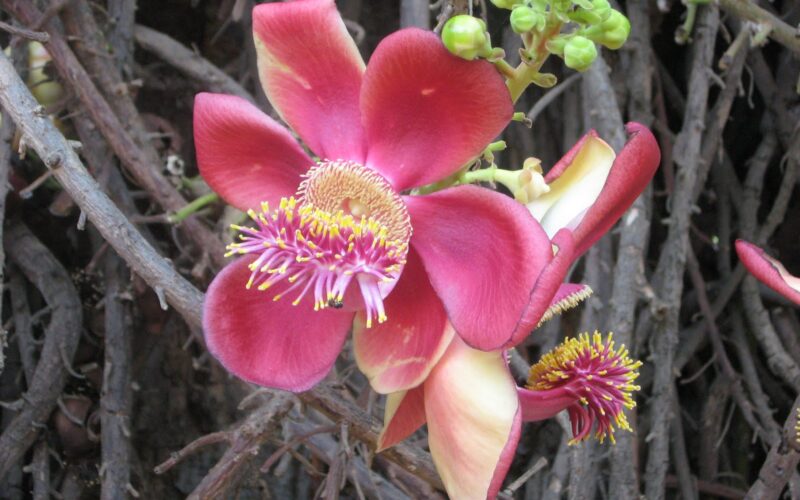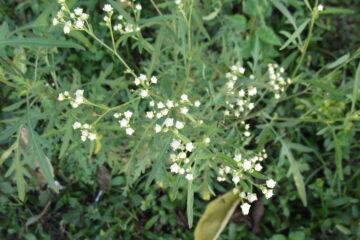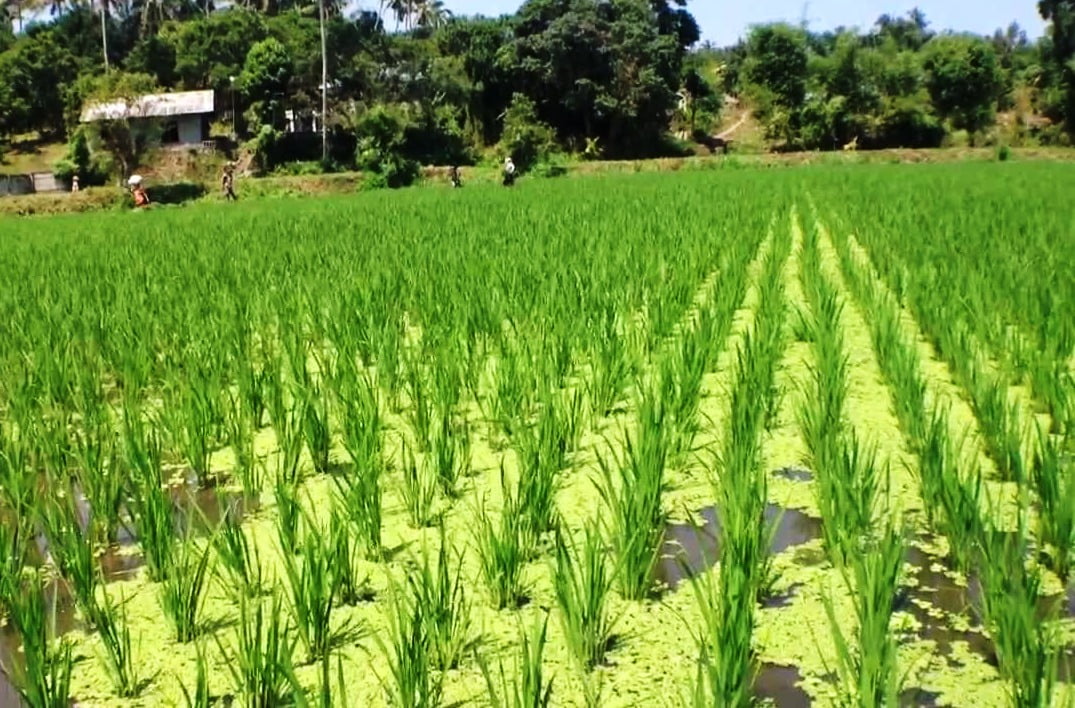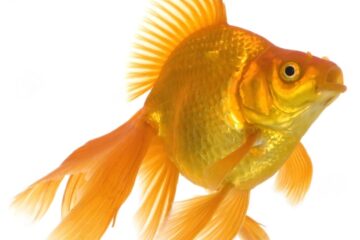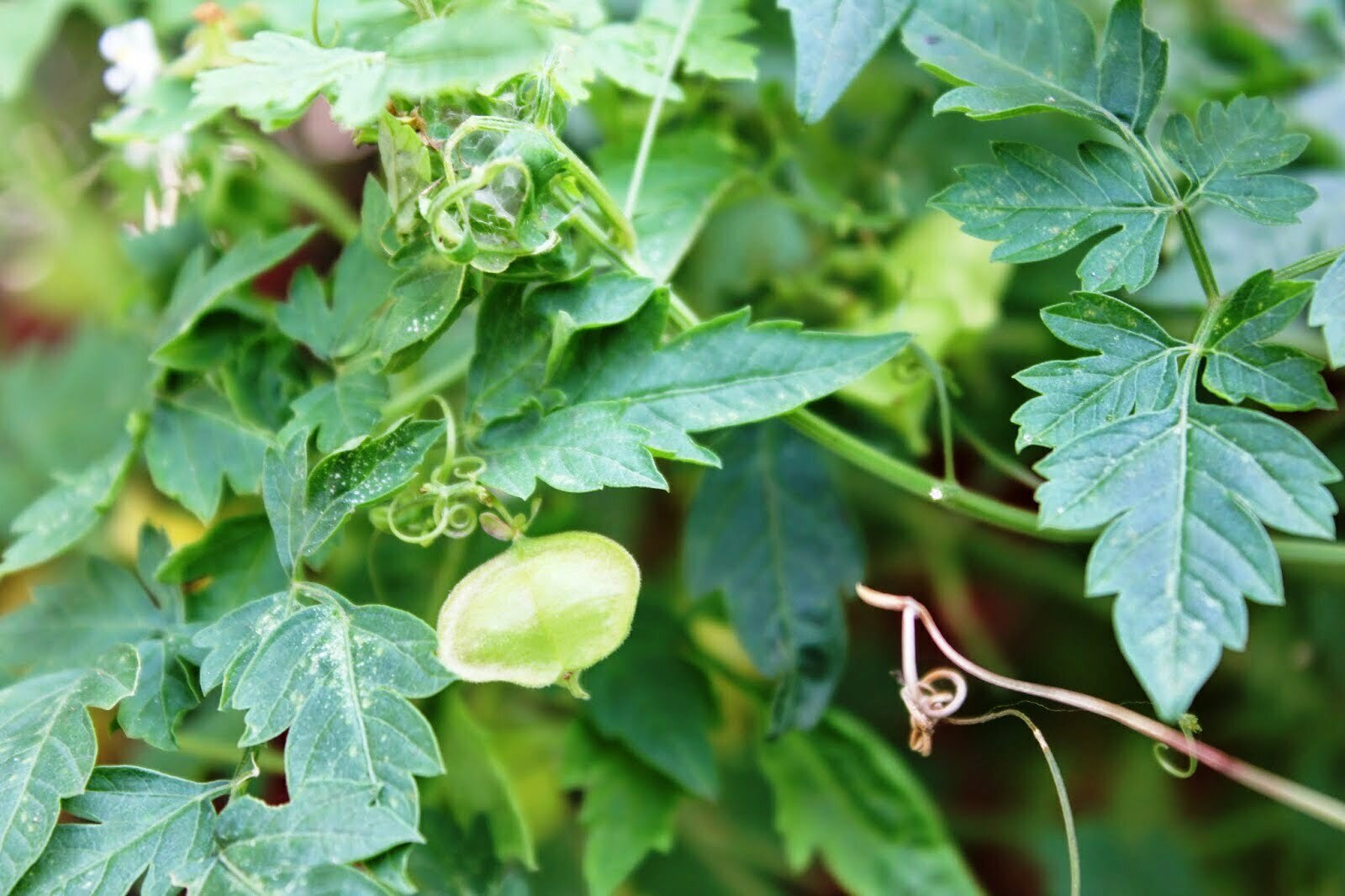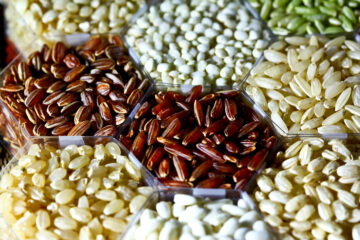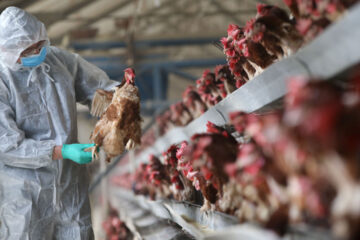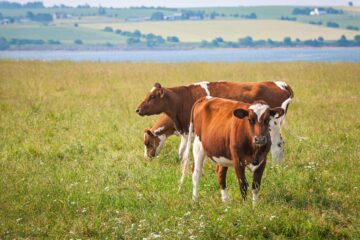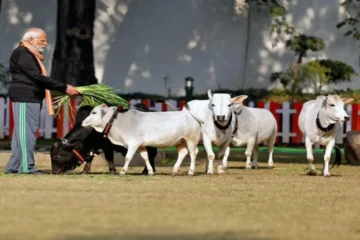Published in: February 2018
The Nagalinga tree (Couroupita guianensis) is native to the northern part of South America, the tropical regions of America, and the southern Caribbean. It belongs to the Lecythidaceae family and is related to the Brazil nut tree. This tree can grow up to 30-35 meters tall.
It is found in some parts of Sri Lanka, Thailand, India, Colombia, Bolivia, Costa Rica, Honduras, the United States, Panama, Peru, Ecuador, and Venezuela. The tree is often planted in parks and along roadsides for its beauty.
Unique Flowers and Spiritual Significance
The Nagalinga tree produces clusters of flowers with remarkable medicinal properties. These flowers bloom directly on the trunk, just above the roots and below the branches. The flowers, revered worldwide for their resemblance to Shiva, have a central structure resembling a Shiva Lingam, surrounded by what looks like sages.
Uses and Benefits
- Ornamental and Functional Uses: The wood of the Nagalinga tree is used to make tools, cooking utensils, and household decorative items. The dried fruit of the Nagalinga tree is toxic and can cause allergies if consumed.
- Medicinal Compounds: The tree contains powerful chemical compounds like dihydro-dioxindole quinazolone, tryptanthrin, indigo indirubin, and isatin. These compounds act as antimicrobial agents, effectively destroying fungi and bacteria that grow on the skin and soft tissues.
- Treatment for Malaria and Poisonous Fevers: The bark and fruits of the Nagalinga tree are used as medicine for poisonous fevers and malaria. They are particularly effective in treating stomach ailments that occur during the winter season.
- Dental Health: The leaves of the Nagalinga tree, when ground into a paste and applied to fungal infections, sores, ringworm, and other skin conditions, can cure these ailments. Chewing the leaves helps remove germs lodged between the teeth and gums, reducing tooth pain and preventing dental plaque.
R. Kalpana Devi, S. Vasantha, Veerayya Vandayar Memorial Sri Pushpam College, Poondi, Thanjavur. N.V. Rajesh, University of Veterinary Sciences Training and Research Center, Ramanathapuram – 623 503

